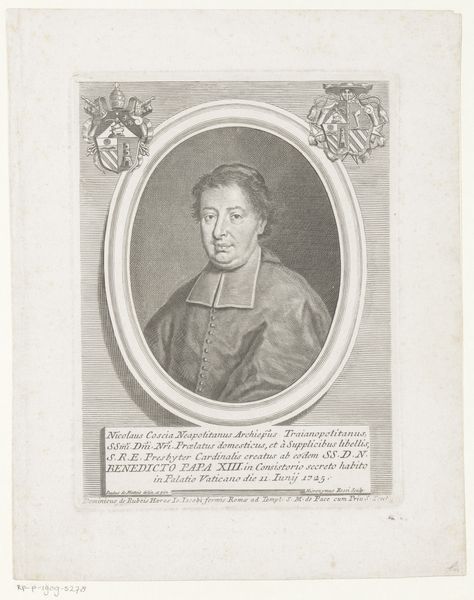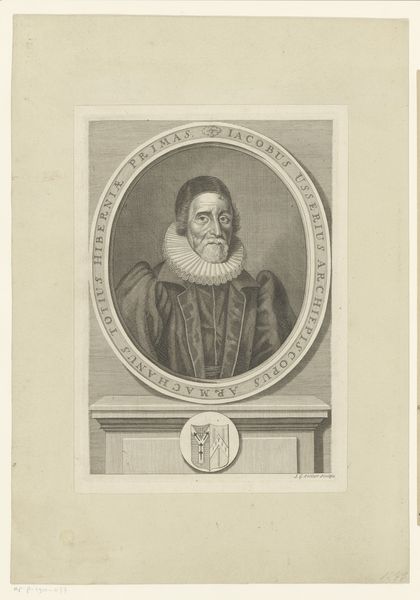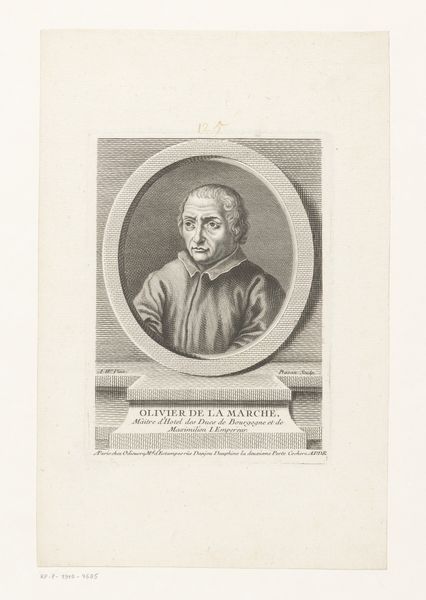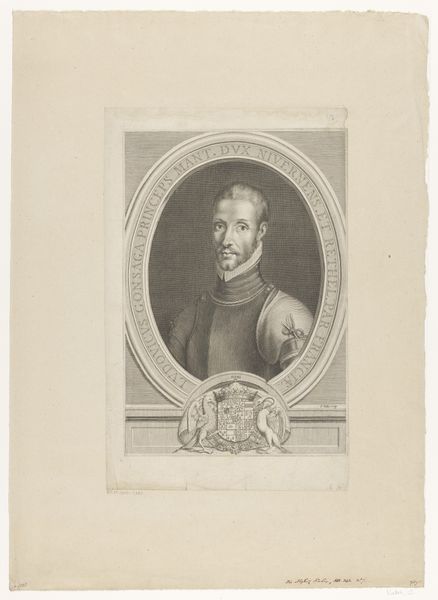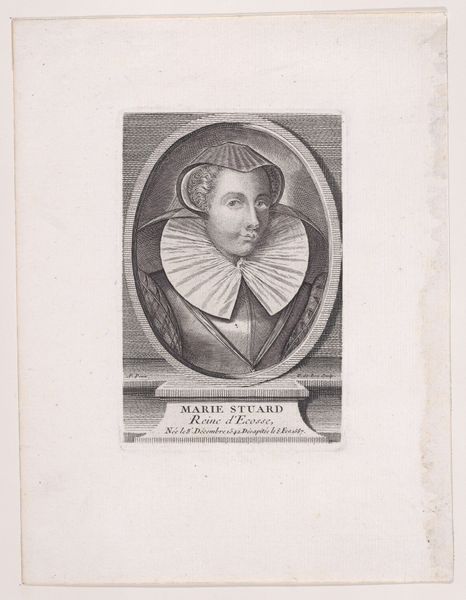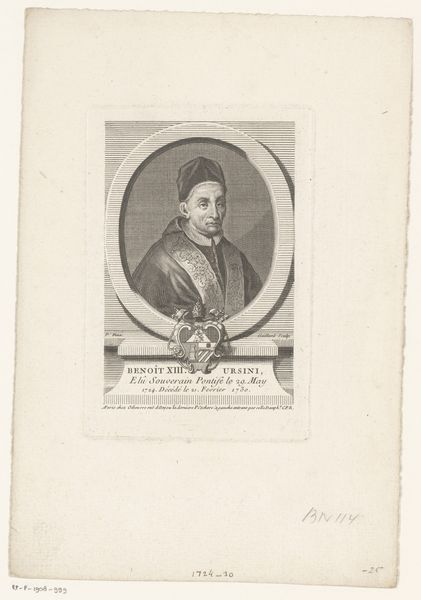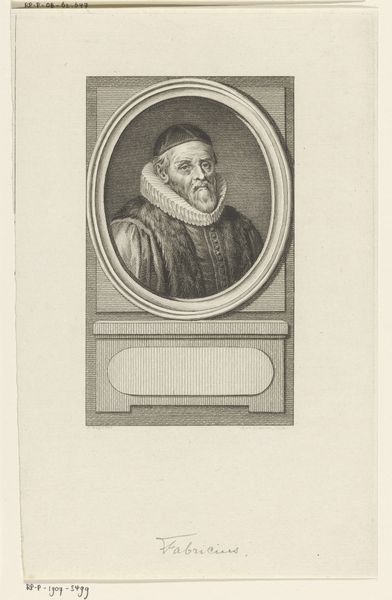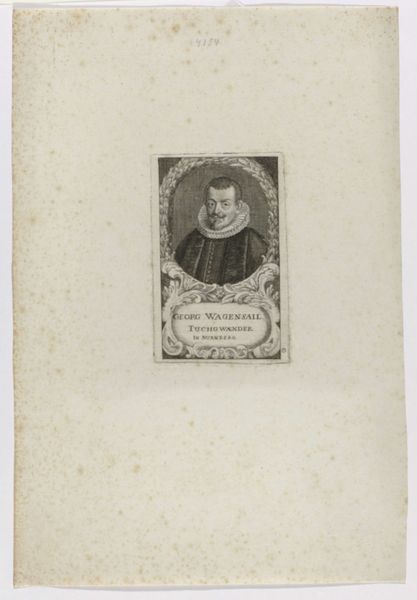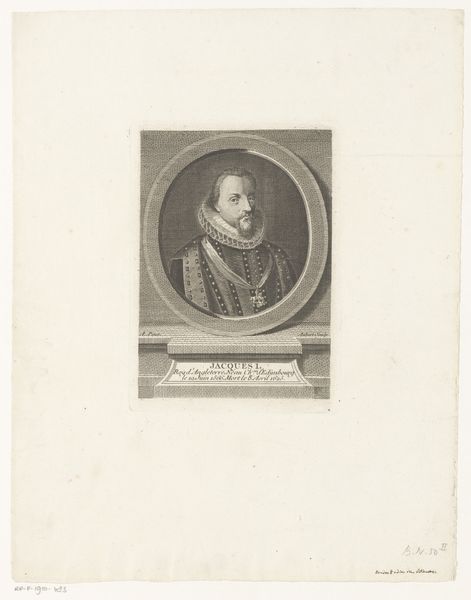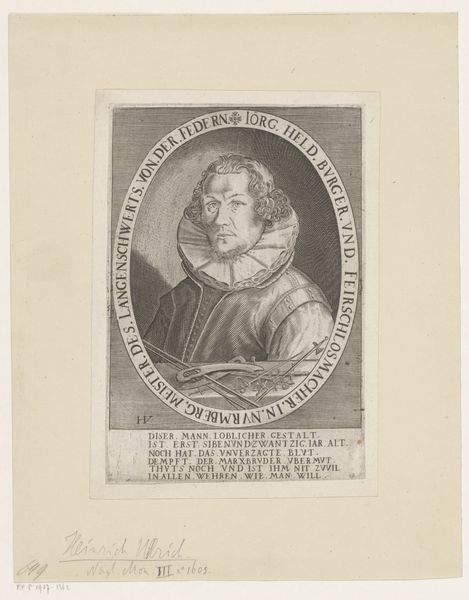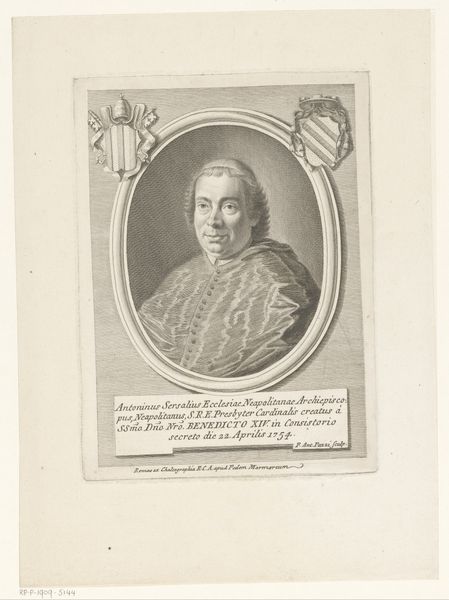
print, engraving
#
portrait
#
aged paper
#
toned paper
#
baroque
# print
#
old engraving style
#
engraving
Dimensions: height 150 mm, width 111 mm
Copyright: Rijks Museum: Open Domain
Editor: Here we have "Portret van Claude de La Trémoille," a Baroque-style engraving from sometime between 1733 and 1756, credited to Pierre François Basan. It feels like such a formal depiction; a man enshrined in a circle atop a pedestal. What historical narratives are embedded in this portrait? Curator: Absolutely. It’s fascinating how portraiture during this period reinforced hierarchies of power and status. This isn't simply a depiction of Claude de La Trémoille; it’s a carefully constructed image meant to project authority and lineage. Consider how the circular frame evokes classical medallions, linking him to a lineage of noble figures. Editor: It's interesting how the image becomes a symbol. What does it tell us about societal values at the time? Curator: Exactly! It highlights the importance of ancestry, nobility, and male power. We can also examine the gaze—it isn't directly engaging; instead, it seems distant, reinforcing a sense of aloofness expected of the aristocracy. This engraving reproduces a painting, and raises issues about access, circulation, and the democratizing potential of reproduced images. Who could afford a painted portrait, and who could afford an engraving? Editor: So, even a seemingly simple portrait opens up these complex questions about society, status, and representation. I hadn’t considered it that way initially! Curator: Precisely. Analyzing art in its social and historical context allows us to unpack the layers of meaning embedded within it and challenge the conventional readings of the artwork. How did Claude de la Tremoille's identity as a Protestant in a Catholic country further affect this work? Editor: That’s a powerful consideration; thanks for pointing me to it. Looking at it now, I realize I had overlooked so much, particularly its statement about social structures. Curator: It is these kinds of inquiries that open the work for discourse.
Comments
No comments
Be the first to comment and join the conversation on the ultimate creative platform.
